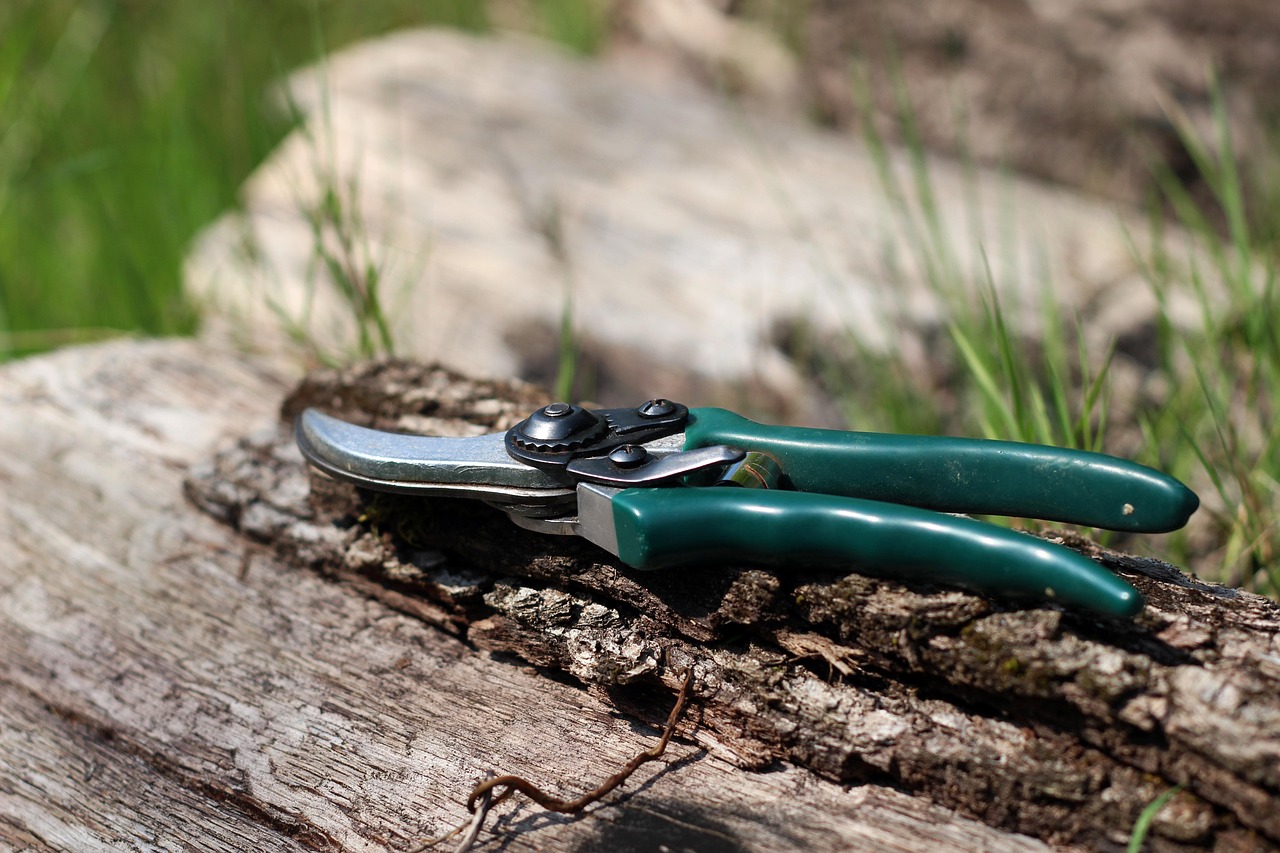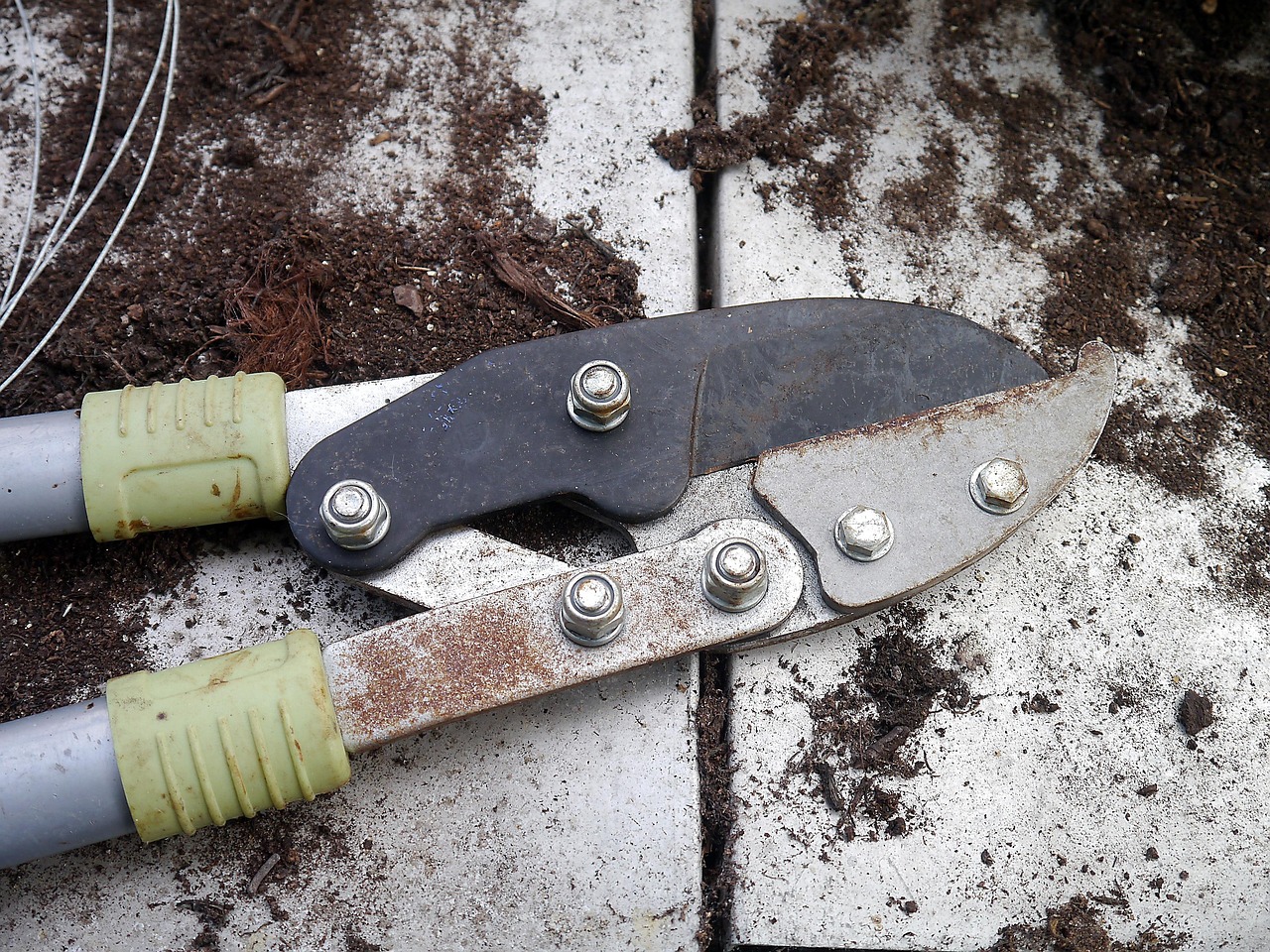To ensure the longevity of tree pruning equipment, regular maintenance is essential. This includes cleaning tools after each use, sharpening blades, checking for rust, lubricating moving parts, and storing them properly in a dry place.
Tree pruning is a vital practice for maintaining healthy trees and shrubs. Proper pruning encourages growth, removes dead or diseased branches, and enhances the overall appearance of your landscape. However, effective pruning depends not only on skill but also on the condition of your tools. Neglected equipment can lead to poor cuts, damage to trees, and increased risk of disease.

Understanding how to maintain your pruning tools can significantly extend their lifespan. Not only will this save you money in the long run, but it will also result in better outcomes for your trees. From saws and shears to loppers and chainsaws, each type of equipment requires specific care to remain effective.
Types of Tree Pruning Equipment
There are several types of tree pruning equipment, each designed for specific tasks. Here are some common tools used in tree pruning:
- Hand Pruners: Ideal for small branches, hand pruners are lightweight and easy to use.
- Loppers: These are larger than hand pruners and can cut thicker branches effectively.
- Saws: Pruning saws are necessary for larger branches that cannot be cut with pruners or loppers.
- Chainsaws: Used for heavy-duty pruning, especially for large trees.
- Hedge Shears: Best for trimming hedges and shaping plants.
Each tool serves a specific purpose and requires unique maintenance practices. Keeping your equipment in good shape is crucial for both safety and efficiency during pruning tasks.

Essential Maintenance Tips
Regular maintenance of pruning tools can greatly enhance their performance and longevity. Below are key maintenance tips that every gardener should follow:
- Cleaning: Always clean your tools after each use. Dirt and sap can build up and affect their performance. Use soapy water and a brush to scrub off any debris.
- Sharpening: Sharp blades make cleaner cuts. Regularly sharpen the edges of your pruners and saws using a sharpening stone or file.
- Rust Prevention: To prevent rust, wipe down metal parts with a cloth soaked in vegetable oil or commercial rust-preventative products.
- Lubrication: Lubricate moving parts such as pivot points on pruners and loppers to keep them operating smoothly.
- Storage: Store your tools in a dry place to prevent moisture-related damage. Consider using a tool chest or wall-mounted rack.
The importance of each maintenance step cannot be overstated. Neglecting any aspect may lead to decreased tool performance or even injury during use.
Signs Your Equipment Needs Maintenance
Being aware of the signs that indicate your pruning tools need maintenance can help you act promptly. Here are some common signs:

- If cutting is difficult, the blades may be dull.
- If rust or corrosion is visible, it’s time to clean and protect your tools.
- If joints or moving parts feel stiff, lubrication is necessary.
- If tools do not close properly or feel loose, they may need adjusting or tightening.
Addressing these issues promptly will ensure that your tools remain efficient and safe to use. A proactive approach to maintenance is key to avoiding costly replacements.
The Importance of Quality Tools
The quality of your tree pruning equipment plays a significant role in its longevity. Investing in high-quality tools can save you time and effort. Here are factors to consider when choosing pruning equipment:
- Material Quality: Choose tools made from durable materials like stainless steel or high-carbon steel, which resist rust and stay sharper longer.
- Ergonomics: Look for tools with comfortable grips and lightweight designs to reduce fatigue during use.
- Warranty: Quality tools often come with warranties that can add peace of mind regarding their durability.
Selecting the right equipment is just as important as maintaining it. Quality tools not only perform better but also require less frequent repairs and replacements.

By following these maintenance tips and understanding the importance of quality equipment, you can ensure that your tree pruning tools last for many seasons. This commitment will ultimately lead to better care for your trees and a more enjoyable gardening experience.
Seasonal Maintenance Practices
Seasonal changes can significantly affect the condition of tree pruning equipment. Implementing specific maintenance practices throughout the year can enhance the longevity and efficiency of your tools. Here are recommended practices for each season:
Spring Maintenance
As the growing season begins, spring is an excellent time to prepare your pruning tools for extensive use. Consider the following steps:
- Inspect Tools: Check each tool for any signs of wear or damage. Look for rust, dull blades, or loose parts.
- Sharpen Blades: Ensure that all cutting edges are sharp. Dull blades can damage plants and require more effort to use.
- Clean Thoroughly: Remove any dirt or sap from the previous season to prevent contamination.
Summer Maintenance
During summer, pruning activities may peak. Regular maintenance during this time is crucial:
- Frequent Cleaning: Clean tools after each use, especially if you are working with diseased plants.
- Lubrication: Reapply lubricant to moving parts to ensure smooth operation in hot weather.
- Monitor Performance: Pay attention to how your tools perform. If something feels off, inspect and adjust as necessary.
Fall Maintenance
As autumn approaches, it’s time to prepare your tools for the cooler months ahead:
- Deep Cleaning: Conduct a thorough cleaning of all tools. Remove any sap or dirt that may have accumulated over the summer.
- Rust Prevention: Apply a rust-preventative oil to all metal surfaces to protect them from moisture.
- Storage Preparation: Make sure your storage area is dry and organized to prevent damage during winter.
winter Maintenance
During winter, tools may not be used as frequently, but they still require attention:
- Inspect Tools Again: Check for any damage that may have occurred during storage.
- Keep Tools Dry: Ensure that your tools remain dry and free from moisture to prevent rust.
- Prepare for Spring: If you plan to do any winter pruning, ensure that your tools are ready for immediate use.
Common Repairs and Troubleshooting
Even with proper maintenance, pruning tools may sometimes require repairs. Understanding common issues can save time and money. Here are some typical problems and their solutions:
Dull Blades
Dull blades are one of the most common issues faced by gardeners. To address this problem:
- Sharpening Method: Use a sharpening stone or file to restore sharpness. Ensure you maintain the original bevel angle.
- Professional Sharpening: Consider taking your tools to a professional for sharpening if you’re unsure about doing it yourself.
Rust Formation
If tools develop rust, it is essential to address it promptly:
- Removing Rust: Use a wire brush or sandpaper to remove rust from the affected areas.
- Preventing Future Rust: After cleaning, apply a coat of oil to protect against moisture.
Loose Handles or Joints
A loose handle or joint can make tools difficult to use safely:
- Tightening Screws: Check and tighten screws and bolts as needed. Use the appropriate screwdriver or wrench.
- Replacing Parts: If parts are worn out, consider replacing them rather than purchasing new tools.
The Role of Proper Usage
The way you use your pruning tools can also affect their lifespan. Here are some best practices for using your equipment effectively:
- Avoid Excessive Force: Let the tool do the work. Applying too much pressure can lead to damage.
- Cuts at the Right Angle: Always make cuts at a proper angle to promote healing and reduce stress on the plant.
- Use the Right Tool for the Job: Using a tool suited for the task at hand will result in better performance and less wear and tear.
Each of these practices contributes not only to the longevity of your tools but also to the health of the trees you are caring for. Being mindful of both maintenance and usage will enhance your overall gardening experience.
Advanced Maintenance Techniques
While basic maintenance is essential for the longevity of tree pruning equipment, incorporating advanced techniques can further enhance performance and durability. Here are some effective advanced maintenance practices that can be applied to various types of pruning tools.
Regular Calibration
Calibrating your tools ensures they function at their best. This is particularly important for powered equipment like chainsaws. Follow these steps for proper calibration:
- Chain Tension: For chainsaws, check the chain tension before each use. A properly tensioned chain cuts more efficiently and reduces wear on the tool.
- Blade Alignment: Ensure that blades on saws and shears are aligned correctly to avoid uneven cuts.
- Fuel Mixture: For gas-powered tools, use the correct fuel-to-oil mixture as recommended by the manufacturer to keep the engine running smoothly.
Protective Coatings
Applying protective coatings to your tools can significantly extend their lifespan. These coatings provide a barrier against moisture and sap. Consider these options:
- Rust-Proof Sprays: Use rust-proof sprays on metal parts after cleaning to prevent corrosion.
- Protective Oils: Apply a thin layer of protective oil on blades and other exposed surfaces after each use.
- Plastic Covers: Invest in covers for your tools, especially during storage, to protect them from dust and moisture.
Tool-Specific Maintenance
Different types of pruning tools require unique maintenance practices. Understanding these can help maximize the effectiveness of each tool.
Hand Pruners
Hand pruners are essential for light pruning tasks. To maintain them effectively:
- Disassemble for Cleaning: Occasionally disassemble your hand pruners to clean hard-to-reach areas, ensuring no sap or debris remains.
- Replace Springs: If the springs are weak or broken, replace them to maintain proper function.
- Adjust Tension: Ensure that the tension screw is adjusted correctly to allow smooth operation.
Loppers
Loppers are used for thicker branches. Their maintenance involves:
- Check for Wear: Regularly inspect the cutting edges for wear and sharpen as needed.
- Check Pivot Points: Lubricate pivot points to ensure smooth movement and ease of use.
- Handle Inspection: Look for cracks or splinters in the handles and replace if necessary to maintain safety.
Saws
Saws require careful attention due to their cutting capacity. Follow these maintenance tips:
- Sharpen Regularly: Use a file designed for saw sharpening to keep teeth sharp.
- Inspect for Damage: Check the blade and handle for any signs of damage or wear that may compromise safety.
- Clean Post-Use: After using a saw, clean it thoroughly to remove sap and dirt that can dull the blade.
The Importance of Professional Servicing
For some advanced maintenance tasks, consider professional servicing. This is especially true for larger or more complex tools like chainsaws. Here are reasons why professional servicing can be beneficial:
- Expertise: Professionals have the expertise to identify issues you may overlook and perform necessary repairs.
- Safety Checks: Professional servicing often includes thorough safety checks, ensuring your equipment is safe for use.
- Comprehensive Maintenance: Many services offer comprehensive maintenance packages that cover all aspects of tool care.
Storage Solutions for Longevity
The way you store your pruning tools can significantly impact their longevity. Safe and proper storage practices help prevent damage and wear. Here are some effective storage solutions:
- Dry Environment: Always store tools in a dry place to prevent rust and corrosion.
- Hang Tools: Use wall-mounted racks or pegboards to hang tools. This keeps them organized and protects blades from damage.
- Airtight Containers: For small tools, consider using airtight containers with moisture-absorbing packets to reduce humidity exposure.
Implementing these advanced maintenance techniques, tool-specific care, and proper storage solutions can significantly enhance the performance and longevity of your tree pruning equipment. By investing time in these practices, you will ensure that your tools are always ready for the next pruning session, allowing for healthier trees and a more productive gardening experience.
Additional Resources and Learning Opportunities
Understanding tree pruning and equipment maintenance can be enhanced through various resources. Here are some avenues to explore for further learning:
- Books: Look for books on horticulture and tree care. Many gardening books include sections dedicated to tool maintenance.
- Online Courses: Websites like Coursera or Udemy offer courses on gardening techniques, including pruning and equipment care.
- Workshops: Local gardening clubs or extension services often host workshops on pruning techniques and tool maintenance.
- YouTube Channels: Numerous gardening experts share tips and tutorials on proper pruning techniques and tool care.
- Manufacturer Guides: Always consult the user manuals for your specific tools. Manufacturers provide valuable information on maintenance and usage.
Engaging with these resources can deepen your understanding of tree pruning and help you become more proficient in maintaining your tools. The more you know, the better equipped you’ll be to care for your trees efficiently.
Environmental Considerations
As you maintain your pruning equipment, consider the environmental impact of your practices. Using eco-friendly products and methods contributes to sustainable gardening. Here are some tips to keep in mind:
- Non-Toxic Cleaners: Use biodegradable soaps and cleaners when washing your tools to minimize chemical runoff into the environment.
- Organic Lubricants: Consider using vegetable-based oils for lubrication as they are less harmful than petroleum-based products.
- Recycling Old Tools: When it’s time to replace tools, recycle or donate them instead of throwing them away to reduce waste.
By incorporating environmentally friendly practices into your maintenance routine, you contribute positively to the ecosystem while caring for your garden.
The Importance of Community
Caring for trees and maintaining pruning equipment can be a solitary task, but it doesn’t have to be. Engaging with a community of fellow gardening enthusiasts can provide support, knowledge, and motivation. Here are a few ways to connect:
- Join Local Gardening Clubs: These clubs often offer networking opportunities, shared resources, and group activities related to gardening and tool maintenance.
- Online Forums: Participate in online forums or social media groups focused on gardening. You can exchange tips, ask questions, and share experiences with others.
- Volunteer Opportunities: Many communities have programs that focus on urban forestry or community gardens. Volunteering can provide hands-on experience while building connections with other gardeners.
The support and shared knowledge from a community can enhance your gardening experience, making it even more rewarding.
Final Thoughts
Maintaining tree pruning equipment is essential for ensuring its longevity and effectiveness. By implementing regular maintenance practices, understanding tool-specific needs, and utilizing proper storage techniques, you can keep your tools in optimal condition for many years. The investment of time in these maintenance tasks pays off through better performance, healthier trees, and a more enjoyable gardening journey.
Furthermore, embracing advanced maintenance techniques, seeking out educational resources, considering environmental impacts, and connecting with the gardening community will enrich your experience. With the right tools and knowledge, you can create a thriving garden that not only enhances the beauty of your landscape but also promotes sustainable practices.
In conclusion, whether you are a novice gardener or an experienced horticulturist, taking care of your pruning tools is a vital part of successful tree management. Start today by assessing your current maintenance practices and look for areas of improvement. Your trees will thank you for it!
